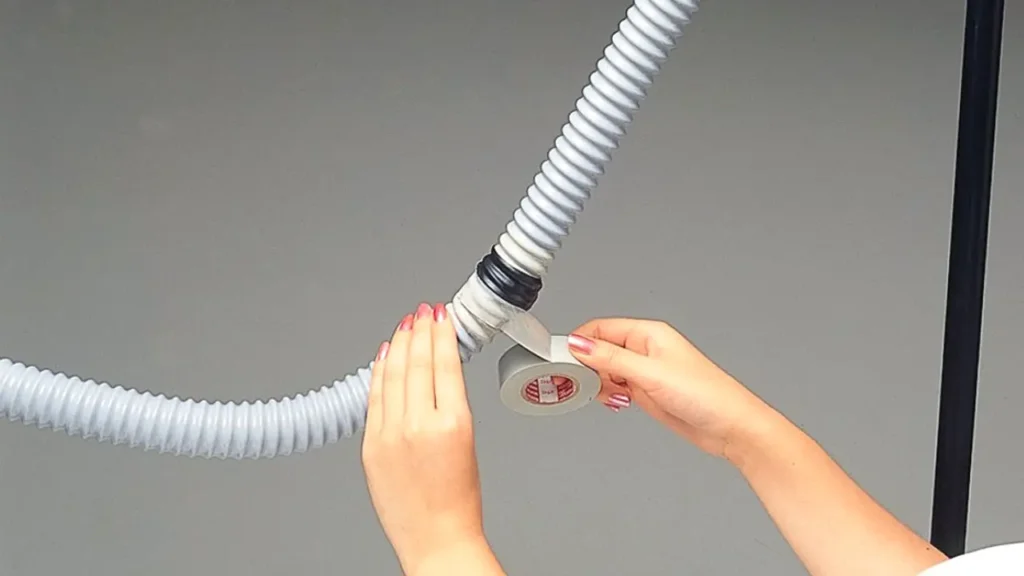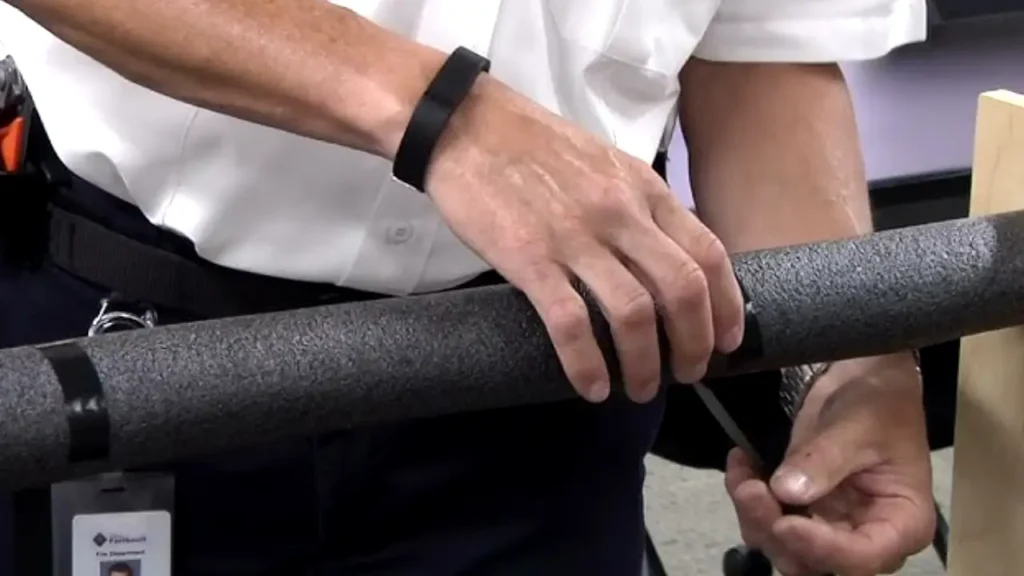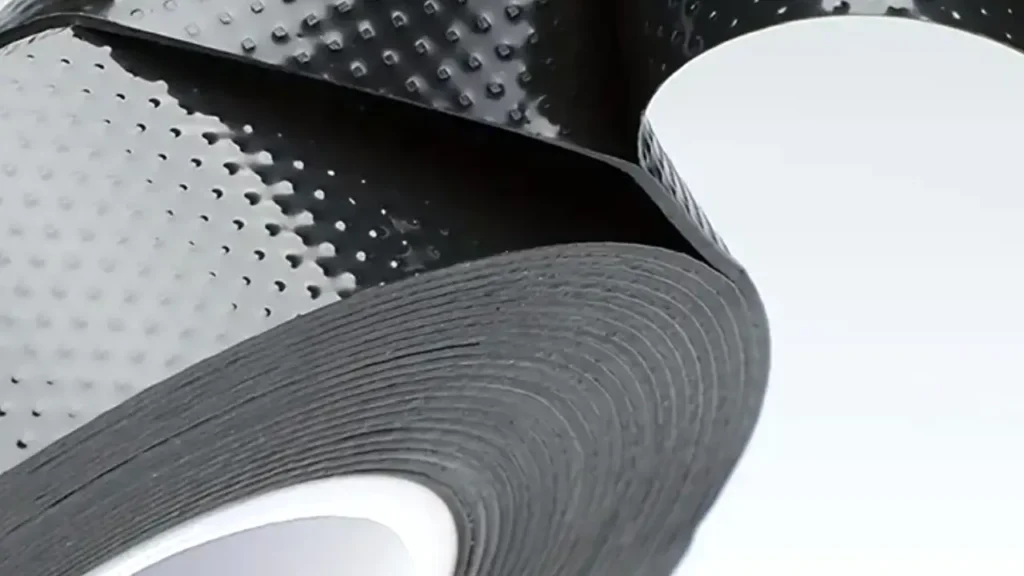It’s a common dilemma when winter approaches: how do you prevent the rubber hoses on your vehicle or industrial equipment from freezing? Many consider wrapping them with electric heat tape as a quick fix. Before you apply a heating element, it’s critical to understand the potential risks and whether this solution is genuinely safe for common hose materials like EPDM or silicone.
While heat tape seems convenient, improper application on rubber hoses can lead to serious problems, including melting the rubber, compromising the hose’s structural integrity, or even starting a fire. This article delves into the material compatibility, dangers, and safe temperatures, providing the information you need to protect your fluid transfer lines effectively.
Rubber Hose Repair Tape

A reliable Rubber Hose Repair Tape is an essential tool for any emergency kit, offering a fast and durable solution for unexpected leaks and bursts in fluid lines. Unlike traditional electrical or duct tapes, specialized hose repair products, particularly self-fusing silicone tapes, create an airtight, watertight seal by chemically bonding to themselves, not to the hose surface.
- Self-Fusing Silicone Technology: This type of tape is non-adhesive yet creates a permanent, high-strength bond when stretched and overlapped upon itself. It seals a damaged rubber hose quickly and effectively, resisting moisture, extreme temperatures (up to 500°F), UV rays, and most chemicals.
- High-Pressure Emergency Seal: Designed to withstand significant internal pressure, this specialized rubber tape allows for immediate, temporary, or even permanent repairs to coolant, air, and water lines. Its elasticity and thickness enable it to conform tightly around the leak, stopping flow disruption and preventing further system damage.
- Extreme Temperature Resistance: Modern rubber repair tapes are engineered to operate in harsh environments, from freezing automotive conditions to hot engine bays, without cracking or becoming brittle. This robust temperature range ensures the seal integrity is maintained under both the high and low thermal stress of the application.
- Versatile and Residue-Free: Beyond fluid hoses, this multi-purpose tape is perfect for insulating electrical connections and wrapping tool handles for better grip. Because it is adhesive-free, it leaves absolutely no sticky residue upon removal, making it a clean and non-damaging solution for various equipment.
Can You Use Heat Tape on Rubber Hose?

You can use heat tape on a rubber hose, but you must exercise extreme caution and adhere to specific safety guidelines to prevent damage to the rubber and potential hazards. The type of rubber, the operating temperature of the heat tape, and proper installation are all critical factors.
Key Considerations for Using Heat Tape on Rubber Hoses
- Material Compatibility: The rubber material’s maximum temperature rating is the most crucial factor. Many standard rubber hoses, like those made of EPDM or natural rubber, can be damaged or weakened by excessive heat, so use a heat tape with a low, regulated output that stays well below this limit.
- Proper Insulation: Insulating the hose and heat tape is highly recommended. This helps to distribute the heat more evenly, reduces heat loss, and protects the rubber from direct, high-temperature contact points, thus minimizing the risk of localized overheating and degradation of the hose material over time.
- Installation Technique: Never overlap the heat tape on itself, as this can create concentrated hot spots that will quickly damage the rubber. Ensure the tape is applied in a spiral wrap with even spacing and that it’s secured with non-damaging material, such as fiberglass tape.
- Temperature Control: Always use a thermostatically controlled heat tape or a system with a separate thermostat. A thermostat is vital for maintaining a safe, consistent temperature on the hose surface, preventing the rubber from exceeding its safe operating temperature and extending the lifespan of both the hose and the heating element.
Rubber Hose Sealing Tape

A good rubber hose sealing tape is crucial for repairing leaks, connections, and damaged sections, offering a temporary or semi-permanent fix that restores functionality. The most effective type is self-fusing silicone rubber tape, which bonds to itself without adhesive, creating a waterproof and airtight seal.
Essential Types and Uses of Rubber Hose Sealing Tape
- Self-Fusing Silicone Tape: This specialized tape is the top choice for hose repair because it stretches and adheres only to itself, forming a solid, seamless, and completely waterproof rubber layer. It provides high dielectric strength and resists extreme temperatures, making it ideal for pressure applications.
- Temporary Leak Repair: For a sudden burst or pinhole leak, a well-applied self-fusing tape can stop the flow immediately. By stretching and tightly wrapping the tape over the damaged area, you create a high-pressure seal that prevents fluid escape until a proper replacement or repair can be made, minimizing downtime.
- Protection and Insulation: Beyond sealing leaks, this tape is excellent for protecting hoses from abrasion, UV damage, and chemical splash. Wrapping it around fittings and vulnerable areas extends the hose’s lifespan and also offers a degree of electrical insulation for hoses near wiring or power sources.
- Application Technique: To achieve the best seal, the hose must be clean and dry before application. Stretch the tape by pulling it tightly as you wrap it, overlapping each turn by 50%. This tension is key for the tape to fuse completely and form a reliable, high-strength, and durable bond that withstands pressure.
Conclusion
In conclusion, the practice of using electric heat tape directly on a rubber hose is generally ill-advised due to the significant risk of material damage and fire. The concentrated, localized heat can easily exceed the service temperature of EPDM and other synthetic rubbers, leading to premature cracking, melting, and catastrophic failure under pressure. Always prioritize freeze prevention methods that offer distributed, controlled warmth or proper insulation.
The lifespan and reliability of your fluid transfer systems depend on using products designed for extreme conditions. For durable hoses built to withstand demanding temperatures and environments, look no further than Kingdaflex. Our selection of EPDM and silicone rubber heater hoses provides the inherent resilience and performance you need, eliminating the need for risky aftermarket heating solutions.
When you need bulk quantities of rubber hoses that you can trust, choose to get wholesale rubber hoses from our Kingdaflex industrial supply. We provide a full range of durable, certified hoses designed to meet global standards and ensure maximum operational uptime for your business. Contact us for competitive pricing and expert material advice.

